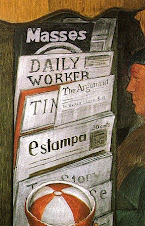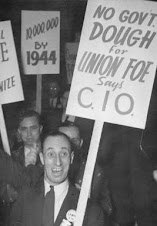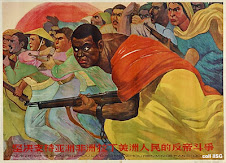By Fred Goldstein
Published Jun 23, 2011 10:17 PM
The cutting-edge struggle in Wisconsin against the capitalist anti-labor, pro-austerity offensive suffered a severe legal setback on June 14. The state Supreme Court overturned a permanent injunction against the union-busting bill signed into law March 11 by the reactionary, racist governor, Scott Walker.
The Dane County court, after mass pressure, had issued an injunction against the bill on May 26. But Walker, architect of the so-called “budget repair” bill, had the capitalist class behind him and prevailed in the higher court.
The problem is not just the legal ruling. The basic question to be asked by rank-and-file unionists, leaders in the oppressed communities and militant students and youth, all of whom pushed this great struggle forward, is the following:
How could the organized labor movement and its allies allow a decision by a tiny group of judges in a capitalist court to override the actions and demands of hundreds of thousands of Wisconsin workers — organized and unorganized, employed and unemployed, immigrants, farmers, youth and students, community organizations — who have been in a high state of mobilization since the Feb. 14 occupation of the Capitol?
This draconian law wipes out collective bargaining by public workers. It establishes the same provisions that prevail in the so-called “right to work” states in the U.S. South. Under associated budget provisions, $800 million or more will be taken from services for the people — including education, health care, food and housing assistance. Hundreds of millions of dollars will be given to the rich in tax breaks and contracts.
The mobilization of Wisconsin workers for four months was one of the greatest sustained shows of strength and organization by the unions in decades. It inspired solidarity, national and international, and a rise in public support for unions.
The 18 days of occupying the Capitol and mass rallies peaked on March 12, when an estimated 185,000 surrounded the Capitol in Madison.
How can such an unpopular set of laws be imposed on millions in the face of this?
It’s not over
It is not too late to ask these questions. One chapter in the Wisconsin struggle may be over, but the attacks are not. The opportunity to reopen the battle may soon reappear.
The short answer is that the struggle had to move from purely political pressure of mass demonstrations to the direct class struggle, where the government, the bosses and the bankers would either be stopped cold or made to pay a high price.
Great excitement and hope was raised when the Wisconsin South Central Federation of Labor, representing 45,000 workers, voted to support any measures taken by its member unions to prepare for a general strike if the law passed. This vote came after a demonstration of 100,000 at the Capitol two days earlier.
The buzz about a general strike in Wisconsin affected the labor movement around the country. Often radical groups demand the labor movement call a general strike without regard to the conditions. But, for the first time in many years, the actual conditions seemed to be taking shape and a major labor federation actually brought it up.
The next week, on Feb. 26, the demonstrations in Madison increased in size and scope to 150,000. Solidarity demonstrations were held in all 50 states. Delegations came to Madison from far and wide, including a planeload of unionists from Los Angeles.
Using an illegal parliamentary maneuver, the Republicans passed the union-busting law and on March 11 Gov. Walker signed it into law. The next day the largest demonstration yet took place, estimated by the AFL-CIO at 185,000, including a large delegation of Wisconsin farmers on their tractors.
By this time it was crystal clear that no amount of political pressure was going to move Walker, the Republicans or the ruling class behind them.
The demonstrations had reached maximum strength. The law was passed. The ranks and lower-level union officials waited to see, now that the bill had passed, what would be the next step.
One option was to reoccupy the Capitol with massive numbers. The occupation had been ended earlier by a combination of lying and trickery by state and labor officials, who helped coax the student and worker occupiers out of the building.
Would there be encouragement or motion for a general strike? The bill had not been stopped. Now it had to be overturned. The struggle needed to be escalated.
The Wisconsin South Central Federation of Labor website published a detailed explanation of how the labor movement in Ontario, Canada, had from 1995 to 1998 carried out 11 Days of Action. These general strikes had defeated union busting and a harsh austerity program. (scfl.org)
Leaders of the Ontario struggle described in detail such things as how to overcome divisions among the unions and how to build alliances with community organizations and social movements. It showed how to set up strike committees with co-chairs from the unions and the community. This is most important in Wisconsin because, while the center of struggle was in Madison, the Black, Latino/a community and immigrant communities, documented and undocumented, would be central to the success of any statewide struggle against the government.
Educating white workers on solidarity with the oppressed communities would be key. The Ontario labor leadership showed how to carry out a protracted campaign to educate union members in meeting halls, homes, bars and donut shops. It went over how to bridge the different organizing styles of community groups and unions, how to deal with the government, the cops, the bosses, the media and so on.
It described how to set up transportation, emergency and medical services; train pickets; map out the cities; create short- and long-term plans; set up a general staff to organize and run the strike.
Most important were the examples of how the Canadian movement refused to recognize that violating workers’ rights was “legal” and instead declared the struggle legal.
Thus, while the union leadership in this country had basically no experience in calling a general strike, a wealth of information was available on how to go about it.
However, on the Wisconsin website, right next to the document on the general strike, was a memorandum on legal rights virtually declaring that any move toward a general strike or any other strike against the state was illegal and put the union and its members in jeopardy of fines and arrests.
The labor leadership in Wisconsin, in the crunch, was silent on the general strike. Instead it turned its attention to the movement to recall Republican legislators and to the prospect of having the law overturned in the courts.
The entire weight of the decision to call a general strike cannot be left on the shoulders of state leaders alone. In such a momentous decision, the state and local leadership must know they are challenging the entire ruling class. It was incumbent on the national labor leadership to declare openly that it would wholeheartedly support such a crucial struggle, where the fate of public employees is at stake. While AFL-CIO President Richard Trumka appeared at support rallies, he never once pointed in the direction of the class struggle, hewing to the line of support for the Democratic Party.
The workers were not defeated in some great class battle with the capitalist state. The setback came about because the labor leaders would not use the strength, energy and determination exhibited by the workers to overcome false claims of capitalist “legality” handed down by the legislature and the courts. Instead, the leaders bowed to capitalist rulings.
There is nothing wrong in principle with using the recall method to get rid of reactionary legislators, nor to use the courts on occasion to enforce the rights of the working class.
What is wrong, however, is to rely on these methods. Parliamentary and judicial methods can at best be secondary when the struggle is with the capitalist class and its state. Only the class struggle, which challenges the class power of the bosses and their state, can bring any significant, lasting victory in the struggle.
The only way to get there is for the rank and file of the labor movement to organize from the ground up, build caucuses to promote the class struggle against the bosses and their state and either force the union leaders to fight or push them aside and take the unions over from below.
Subscribe to:
Post Comments (Atom)










































No comments:
Post a Comment